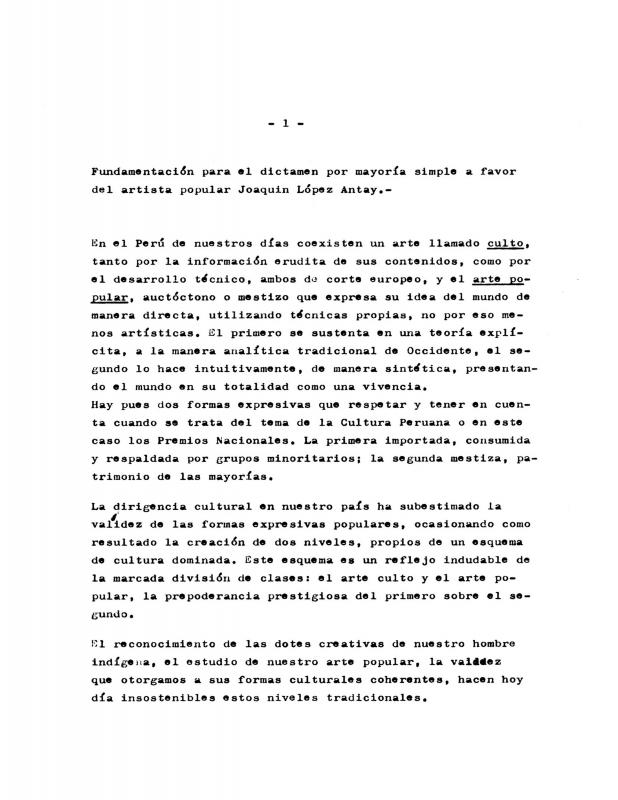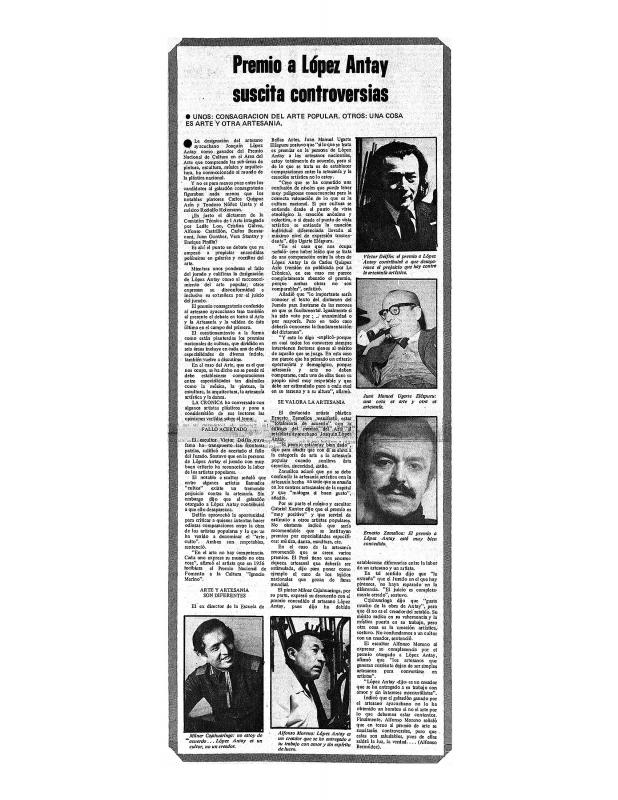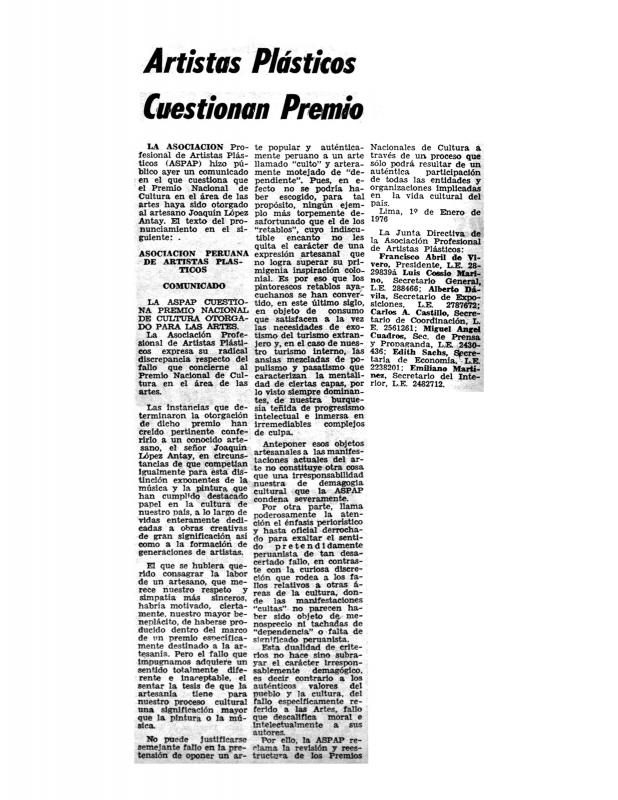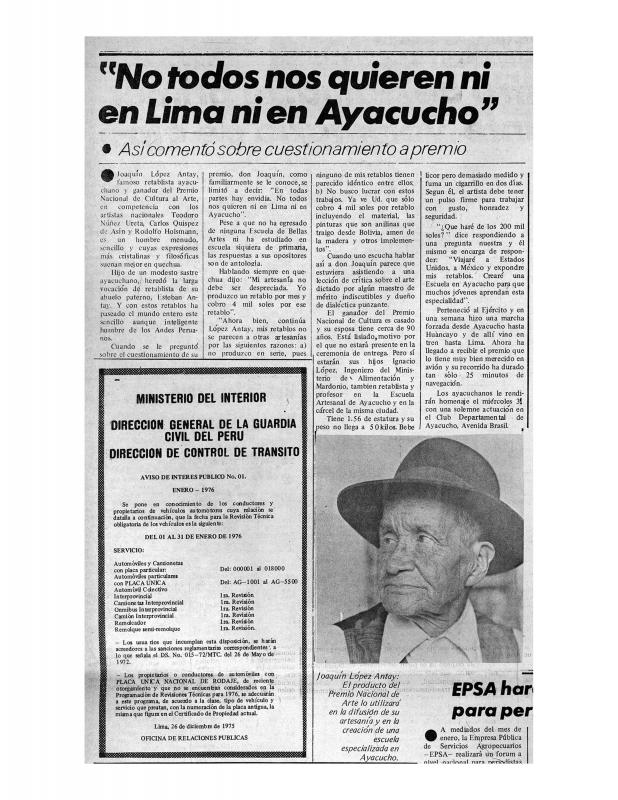Guillermo Rouillón (1917–78) was a left-wing intellectual who studied and wrote about the life and work of José Carlos Mariátegui (1894–1930), the founder of modern Peruvian socialism. This article is of particular interest because it associates the National Culture Prize awarded to Joaquín López Antay with the pioneering reappraisal of traditional art embarked upon by the Indigenist movement in the 1920s (in Mariátegui’s magazine Amauta, for example). Although there are two different historical moments involved—as reflected in the Indigenist’s idealized views, on the one hand, and the populist backdrop to the decision to award the art prize to the Andean artisan on the other—they both made important contributions to the redefinition of Peruvian arts in terms of the respective cultural circumstances.
The national debate on this subject prompted a number of newspaper articles in which the vast majority of intellectuals, artists, and journalists threw their support behind the Andean artisan López Antay.
An announcement on December 26, 1975 confirmed that the National Culture Prizes (for the 1973–74 biennium) had been awarded by the Peruvian government through the Instituto Nacional de Cultura to honor the greatest contributions to the development of Peruvian culture. The jury’s decision in the art category (which had traditionally included painting, sculpture, music, and architecture) ignited one of the most heated debates in the history of Peruvian art. The ensuing controversy underscored simmering tensions and suspicions regarding the cultural policies of the revolutionary government of the armed forces led by General Juan Velasco Alvarado (1968–75). This administration claimed to be committed to a progressive agenda, a claim supported mainly by the Agrarian Reform of 1969 which was accompanied by the government’s enthusiastic attempt to glorify the image of the peasant population and lifestyle at the expense of other forms of cultural expression that were considered more “Western.” On this occasion the prize was awarded to Joaquín López Antay (1897–1981), who was chosen over well-known visual artists such as Carlos Quízpez Asín (1900–83) and Teodoro Núñez Ureta (1912–88) and the German-born academic musician Rodolfo Holzmann (1910–92).
[Regarding this conflict, see the following articles in the ICAA digital archive: by Alfonso Castrillón, Leslie Lee, and Carlos Bernasconi “Fundamentación para el dictamen por mayoría simple a favor del artista popular Joaquín López Antay” (doc. no. 1135896); by Alfonso Bermúdez “Premio a López Antay suscita controversias. Unos: consagración del arte popular. Otros: una cosa es arte y otra artesanía” (doc. no. 1135879); by Francisco Abril de Vivero, Luis Cossio Marino, and Alberto Dávila “Artistas plásticos cuestionan premio” (doc. no. 1135960); and (anonymous) “‘No todos nos quieren ni en Lima ni en Ayacucho’: así comentó sobre cuestionamiento a premio” (doc. no. 1135930)].




